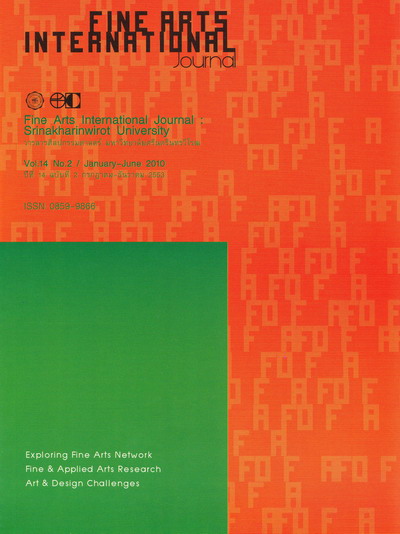An Analytical study of Panyha-Shaped Houses in Chanthaburi province
Keywords:
Panhya-shaped House, Form, Material, DecorationAbstract
The purpose of this master thesis is to study Panhya-shaped houses in four districts of Chanthaburi provinces which were very popular in the age of King Rama V. Panhyashaped houses in Chanthaburi were found in Muang, Thamai, Khlung and Laemsing districts. Most of the houses were wooden house, concrete–wooden house and brick- concrete house. Types of houses were two-storey houses, one-storey houses with basement and one-story grounded- level houses. These houses were singer houses, gardener houses, official houses, temple, school and row houses for rent. The roofs of Panhya-shaped house in Chanthaburi are single top shape, two top shapes in one house, L shape and U shape. Panhya-shaped houses were mostly roofed with kite shape tile and cement wave tile which can frequently be seen at present. Many Panhya-shaped houses’ roofs were changed into modern tile roof because of deterioration. These modern tiles are coated with wave tile, double wave tile, small wave tile and flat tile. Often, they were decorated with Look Phak or Look Phak mixed with Louver on windows, doors, and front poles. Many houses were decorated with stencil cut more than pattern and on Koh Song at front doors, Koh Song below ceilings, balconies, window frames, ventilator below ceilings and ventilator below upstair floors. Information of carpenters was not stated, but most of them were the locals, Thai, Chinese and Yuan carpenters when some of villagers ordered from Central.






